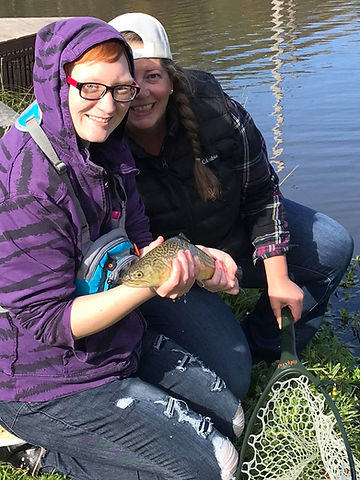The Mayfly Project

The Mayfly Project began with one angler’s struggles with anxiety. Jess Westbrook has been fly fishing since he was 6 years old, but it wasn’t until 2014 that he discovered the healing power of fishing.
Jess and Laura Westbrook started The Mayfly Project to take a local group of children fly fishing. He reached out to fly fishing artist, Andrea Larko, to have her create a logo for The Mayfly Project, because he wanted to have a beautiful symbol to share with their community. It was that symbol that caught the eye of mental health professional, Kaitlin Barnhart in Idaho. Larko told Barnhart the logo was for a guy in Arkansas taking foster children fly fishing. She immediately reached out to Jess, because she was doing the same thing in Idaho.
Barnhart had been taking children in foster care fly fishing since 2006. She was using fly fishing as a way to decompress from her stressful work career working for Child Protective Services, Juvenile Detention, and residential treatment with foster children. Once Barnhart realized how beneficial fly fishing was for foster children specifically, it became her mission to lead this population to the rivers.
In 2016, after many hours of hashing through the possibilities of reaching more children in foster care across the United States, a partnership was formed, and the nation program was created. The Mayfly Project is now booking across the United States.
With this purpose, The Mayfly Project was founded, and now, almost seven years later, 51 chapters (or as they call them “projects”) exist in 32 states. Two of those projects can be found in Pennsylvania, one in Hollidaysburg and one in Smethport.

Heather Sees, a native of McKean County, PA, currently serves as the National Project Liason for The Mayfly Project. Sees first became involved with The Mayfly Project while living in Colorado, where she founded the Denver Project in 2017. For Sees, the opportunity to help children in foster care has been a very rewarding experience.
“In Colorado,” said Sees, “we went to a group home for teenage boys to see if any of them would be interested in the project, and the program leader said that if we could get one particular kid onboard, then the rest of the boys would follow. He had been in the group home the longest, was a little standoffish, and everyone sort of looked up to him, so I made it my personal mission to get him engaged.”
Sees achieved that and more. But it wasn’t easy at first.
“We met with the boys every other week,” said Sees. “Many of the boys had never been out of the city, so we were definitely taking them out of their comfort zone, which was awesome because they needed that. They needed to know the healing power of the woods and water and just kind of disconnect. I knew it would benefit them in the long run.”
On each outing, Sees and a group of mentors focused on teaching the boys various aspects of fly fishing. From how to rig up a fly rod to the basics of casting and identifying what the fish are eating, Sees and the other mentors taught the boys skills that would help them be successful. After five or six outings, they were rewarded with a trip to fish some private water swarming with huge trout.
“The first outing was hard, not gonna lie,” said Sees. “The kids were completely out of their comfort zones with strangers who they didn’t know if they could trust. These kids were ticked at the world, and rightfully so. We had to earn their trust. But by the third event, I was standing in the river with that boy who was standoffish, and he looked at me and said, ‘Thanks so much for just coming out and showing up when you say you’re gonna show up and for not judging us. You make us feel really safe.’
“That was the third outing and that kid was the only one who hadn’t caught a fish. At that point, I realized it wasn’t about catching fish. It was literally about us standing in the river or on the banks with these kids, showing them that there are people out there who care about them.”
Sees moved back to Pennsylvania in 2018, and the following year helped co-found the Smethport Project. “I knew I had to bring the project to McKean County,” said Sees. In the fall of 2019, 11 kids participated in the inaugural program.
“There was so much interest,” said Sees. “We now have a curriculum we can follow, too, and it’s very structured, which is something else the kids seem to thrive on. If you don’t have structure, things can get squirrely really fast. But that structure also made it easier to take everything I’d learned in Denver and apply it here at home.”
Participants in the Smethport Project earn pins for good behavior, such as picking up trash, being safe, and even proper fish handling. The goal is to instill respect and support for the conservation initiative and teach them how to take care of the fragile ecosystems that we all love and enjoy.

“The Mayfly Project gives these kids a tool for their toolbox that they can use when life gets hard,” said Sees. “Kids in foster care face challenges every single day. They don’t know where they’re going to be living. They don’t know if they’ll get adopted. They don’t know if they’ll have to move to a different foster home. There’s so much uncertainty in their lives,” said Sees.
“I was fortunate to grow up with both parents in my home and surrounded by a ton of cousins where there wasn’t that uncertainty. With this project, we show kids that we care and we want to make sure they’re okay. We don’t judge them and just let kids be kids and give them an opportunity to not have to worry about what’s going to happen tomorrow,” said Sees.
“By the end of the event, it’s amazing how much the kids have transformed because they’re opening up and forming new relationships. For me, that’s why I continue to be involved with The Mayfly Project,” said Sees. “The fishing is just a bonus.”
In 2021, 400 kids in foster care will be mentored through The Mayfly Project, a national 501(c)(3) non-profit organization. There are many ways to contribute to this program, whether through volunteering for one of their projects, donating gear, donating tackle, or conducting a fundraiser. For more information, visit them online at www.themayflyproject.com.
